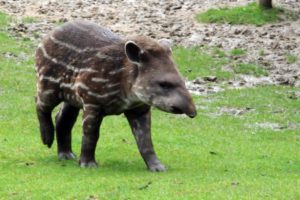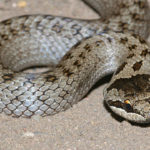Facts about tapirs
 Tapir is a herbivore that belongs to a group of ungulates. These are relatively small, awkward animals with four toes on the front legs and three to the rear ones. The tapirs have an oblong, narrow head with an elongated upper lip, small eyes and erect ears. They have strong high legs and a short tail.
Tapir is a herbivore that belongs to a group of ungulates. These are relatively small, awkward animals with four toes on the front legs and three to the rear ones. The tapirs have an oblong, narrow head with an elongated upper lip, small eyes and erect ears. They have strong high legs and a short tail.
To date, there are only five species (although most of the near-scientific sites call four). The opening of the small black tapir was announced in December 2013 by a group of Brazilian zoologists in the Journal of Mammalogy, which makes it the first inarticulate, discovered in more than 100 years. It is one of the oldest animals on the planet – they live at least 55 million years. And during this long period he practically did not change.
Mentally, the tapir is developed at the level of a domestic pig. The main food of tapirs is forest plants. Once in captivity, tapirs quickly become domesticated and become calm and tame.
Tapirs live in Latin America and Southeast Asia, where they inhabit swampy forests and shrubs along the banks of rivers and lakes. Modern species are the remains of a once vast group, the area of which extended to the entire Northern Hemisphere. These are the only wild representatives of the ungulates in America.
Tapirs are the least studied animals from all mammals. Nobody knows exactly how they build relationships within their groups and why they make a strange sound, like a whistle.
Central American tapir, or tapir Brad. (Latin Tapirus bairdii) Its scientific name is given in honor of the American zoologist Spencer Fullerton Byrd.



























